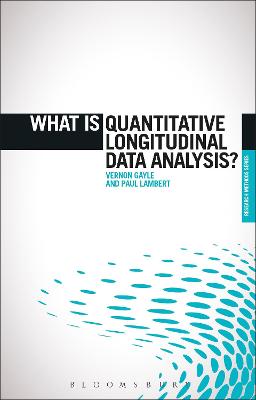The 'What is?' Research Methods
1 total work
What is Quantitative Longitudinal Data Analysis?
by Professor Vernon Gayle and Dr Paul Lambert
Published 22 February 2018
This book is available as open access through the Bloomsbury Open Access programme and is available on www.bloomsburycollections.com.
Across the social sciences, there is widespread agreement that quantitative longitudinal research designs offer analysts powerful scientific data resources. But, to date, many texts on analysing longitudinal social analysis surveys have been written from a statistical, rather than a social science data analysis perspective and they lack adequate coverage of common practical challenges associated with social science data analyses.
This book provides a practical and up-to-date introduction to influential approaches to quantitative longitudinal data analysis in the social sciences. The book introduces definitions and terms, explains the relative attractions of such a longitudinal design, and offers an introduction to the main techniques of analysis, explaining their requirements, statistical properties and their substantive contribution.
The book is designed for postgraduates and researchers across the social sciences considering the use of quantitative longitudinal data resources in their research. It will also be an excellent text for undergraduate and postgraduate courses on advanced quantitative methods.
Across the social sciences, there is widespread agreement that quantitative longitudinal research designs offer analysts powerful scientific data resources. But, to date, many texts on analysing longitudinal social analysis surveys have been written from a statistical, rather than a social science data analysis perspective and they lack adequate coverage of common practical challenges associated with social science data analyses.
This book provides a practical and up-to-date introduction to influential approaches to quantitative longitudinal data analysis in the social sciences. The book introduces definitions and terms, explains the relative attractions of such a longitudinal design, and offers an introduction to the main techniques of analysis, explaining their requirements, statistical properties and their substantive contribution.
The book is designed for postgraduates and researchers across the social sciences considering the use of quantitative longitudinal data resources in their research. It will also be an excellent text for undergraduate and postgraduate courses on advanced quantitative methods.
